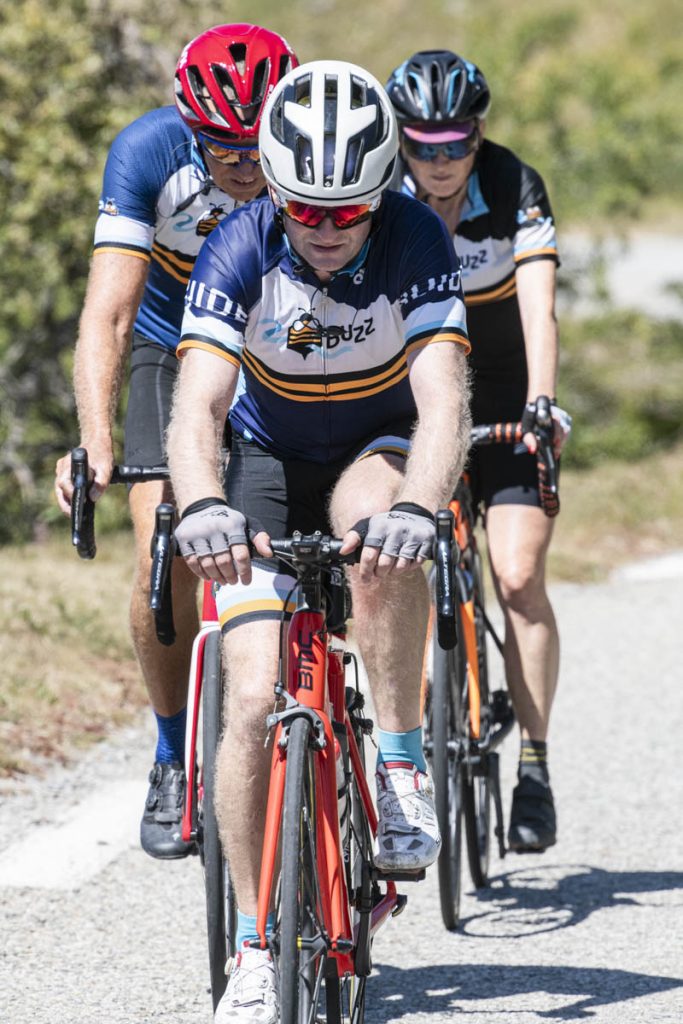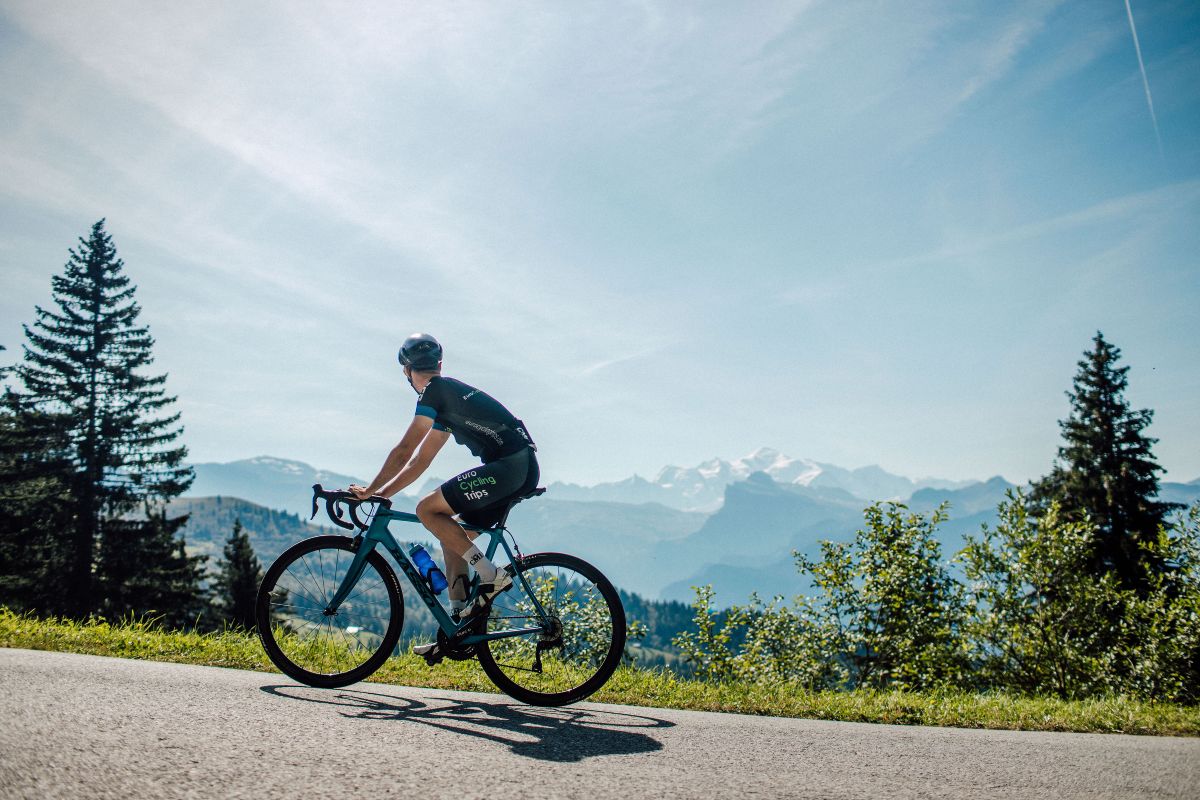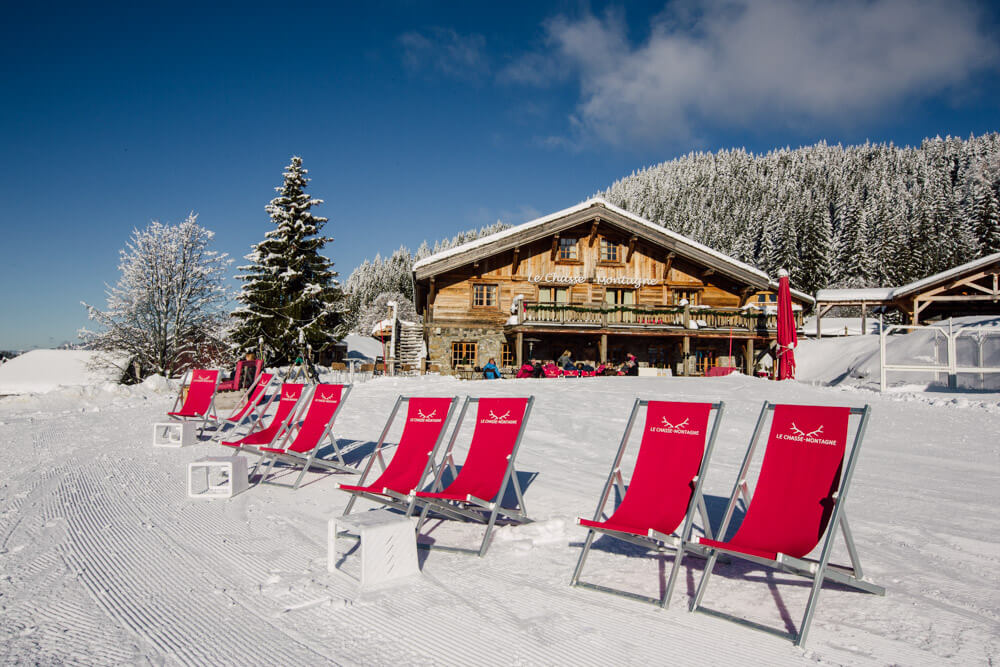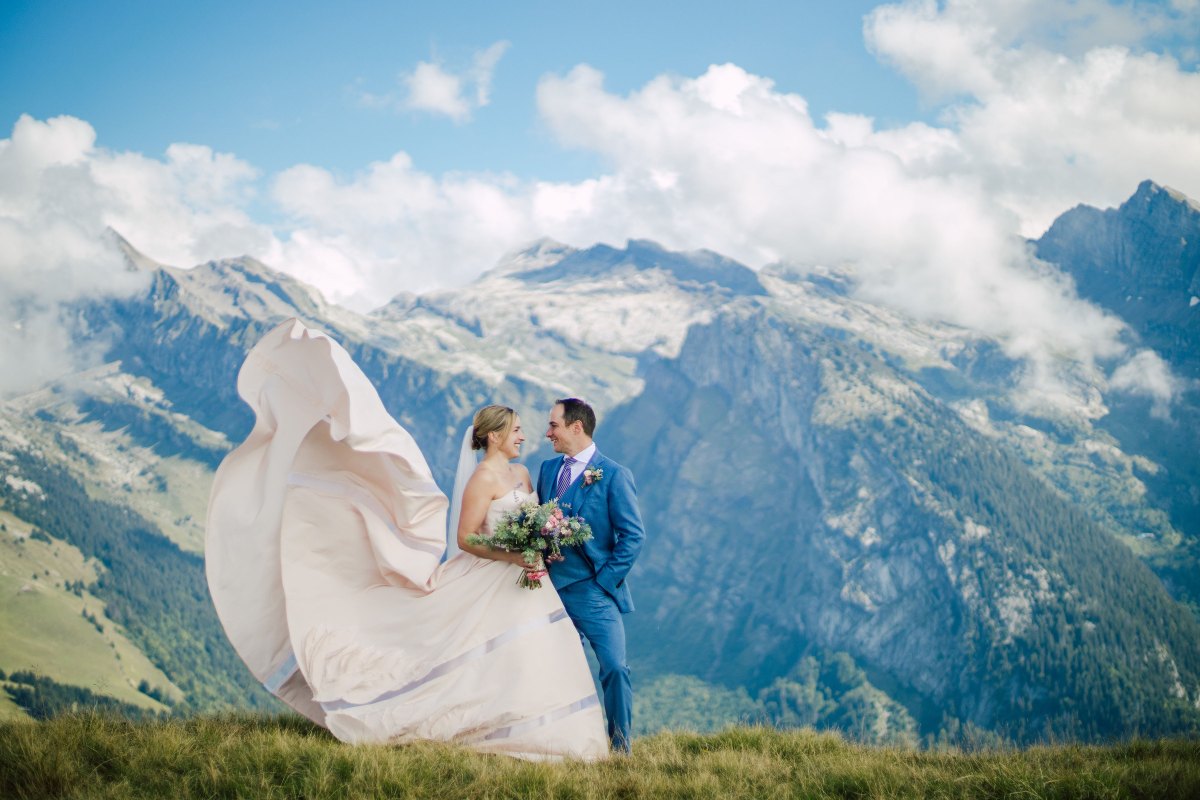7 Tips To Help You Take Great Cycling Photos

When we wrote our article “where to rent a bike in Morzine” we discovered the photographer Martine Enselme. She works for Buzz Performance and captures their cyclists in action on the mountain roads around Morzine, across the Alps or in Mallorca. Martine has agreed to share with The Farmhouse her seven top tips to help you succeed in taking great cycling photos.
Whether you are an amateur or experienced photographer, you may have already had the desire or opportunity to follow cyclists during a sporting event or a trip of one or more days.
If you have ever wondered how to illustrate such an adventure with accuracy and emotion then you are in luck. In the following article, I will share with you 7 lessons learned from my 10-years of experience of photographing cyclists on stunning mountain roads.

1) Preparation
I always try to think in advance about how to better organize myself once the cyclists are on the way. This is a wise precaution, because cyclists always ride faster than we think, even when we follow them by car!
Here are some suggestions:
- The ideal scenario: to familiarise yourself with the route in advance by going there. You can, for example, look for the points of view you like, try different framing by imagining the cyclists in the setting you have chosen, or identify the places to park your vehicle without disturbing anyone.
- If it is impossible to go in advance, prepare yourself with Google Maps: the satellite view is good for showing the configuration of the roads and some places to park your vehicle; you can also find ideas for points of view by searching for photos on the internet.
- Ask the cyclists you follow if they have any particular wishes: a specific location; in full attack on an ascent; passing the sign of each pass crossed, etc.
- Estimate cyclists’ journey times to plan your own schedule and arrive early enough at the viewpoints where you plan to stop – allow enough time to park, take out your equipment, do some framing tests, etc.
- Know the habits of the cyclists you accompany: some like to smile at the photographer, others try to avoid the camera when they spot it, some cut the turns … These observations will help you imagine your photos
- Focus on a specific topic: find a good road sign; think of photographing so-and-so in a hairpin bend; where to organize a group photo at the top of a specific pass
- And of course, follow your inspiration in the moment based on the weather, lighting, encounters, and everything that’s going on throughout your trip.
2) Compose your photo:
How do you guide the viewer’s gaze inside your photo to share what you have seen and felt? Here’s how I work:
- I first identify what caught my own eye or brought me a particular emotion
- Then I think about how to create the photo: a cyclist in the landscape? A close-up of a smile or a face in full attack? A patchwork of colors?
- After which, I rely on a few tips to guide the composition, while being careful not to limit your imagination, such as:
- Off-center your subject to give dynamism
- Use roads as guidelines in the photo
- Play with sharpness and blur to highlight the subject, suggest movement or bring an artistic side
- Vary the formats: landscape, portrait, square, panoramic
- Combine colors or textures, include picturesque elements
- Check the framing one last time with special attention to annoying elements like a pole in the middle of the photo, or poorly cut elements on the edges of the photo
- Look for the play of light, contrasts, reflections
These tips are of course only a starting point: it’s up to you to combine them in your own way and with your own style.

3) Tell the journey
I usually work to tell the whole trip, and therefore to capture all the moments that will tell a story for the cyclists I accompany.
A simple way is to follow the course of the day, the steps of which can be:
- Morning preparations and reunion of the group before departure
- Briefing, waiting before departure, getting started
- Cyclists in action along the route, especially at places spotted in advance
- Breaks, meetings and anecdotes
- The essential souvenir photo.
Now it’s up to you to take this framework and add your personal touch, or invent your own scenario!

4) Capture emotions
You go through all kinds of emotions during the long hours spent on your bike, whether you walk the steep passes and slopes of the Alps or elsewhere, whether you ride in a group on the flat or sprint at the sight of the finish line.
In turn, we smile at our supporters, we chat with the group, we feel alone in a tunnel, we are cold in the fog, we relax during a break, we have to put a foot on the ground in the ascent of the Izoard, we focus on the road in front of us, we suffer in the last meters of the Iseran, we motivate a struggling friend, we enjoy the dynamics of the group, we celebrate the arrival, we enjoy a landscape …
So many moments that make the richness of a cycling trip, try to seize them!

5) Same place, multiple viewpoints
Some places allow a series of very different points of view from one another, and this is from a limited space of sometimes only a few centimeters.
This gives you a unique opportunity to vary the photos without having to move around too much. This makes it possible to find different viewing angles from the photos that we usually see of certain places and, another important aspect, to optimize your time.
How to find these places? You have to look for them! So once stopped somewhere, observe, look in different directions, move a few hundred meters, climb on an embankment… In short, don’t just stand in front of the hood of your car.
I strongly encourage you to hunt for different points of view, which will quickly become a game, and will allow you to take photos that are out of the ordinary.

6) Everyone has their own thing: tunnels
We all have particular subjects that we can’t help but photograph. Why these topics more than others? Probably a question of personality.
There are at least two good reasons to photograph them: cyclists will enjoy finding them among the memories of their trip, and you will have fun taking pictures of them.
In my case, I have a soft spot for tunnels.
They often come up in conversations between cyclists: in the advice before the start to approach them with caution, and also in the post-ride discussions because it was wet or really dark and the noise of the bikes was deafening.
And it is in my eyes a photographic treat: there are cold atmospheres, plays of light, contrasts and reflections … it’s a fascinating subject that I often try to include in my photos.
You too surely have something that catches your eye. If it fits well into the history of travel, treat yourself and do not deprive yourself of it.

7) The finishing touch
Should I edit my photos? It’s a personal choice and you can decide not to do it. However, even a minimal adjustment of contrast, brightness, colors, possibly cropping, will undoubtedly add to your images.
Editing your photos also allows you to give a more personal interpretation. This is particularly the case with black and white, which I use regularly. Its sobriety highlights essential elements such as shapes, contrasts, textures or facial expressions. This is a great way to reinforce the message of a photo.
How to proceed ? For digital photos, there are many editing software and applications.
On an iPhone, for example, you can use a filter to convert a photo to black and white.
If you post your photos on social networks, filters are available when posting. Some, like on Instagram, have good rendering tools.
For my part, I work mainly from editing software (Adobe Lightroom): I use the preset filters as inspiration, then I make my own settings until I create a photo that is truly unique and perfectly to my liking.

I hope these 7 principles will be useful to you on your cycle-photographic adventures. And now, to your devices and indulge yourself!
Do not hesitate to contact Martine for more information on her personalized reports or her photo workshops. Martine also takes Fine Art photos of the Lake Geneva region and the Alps.


















